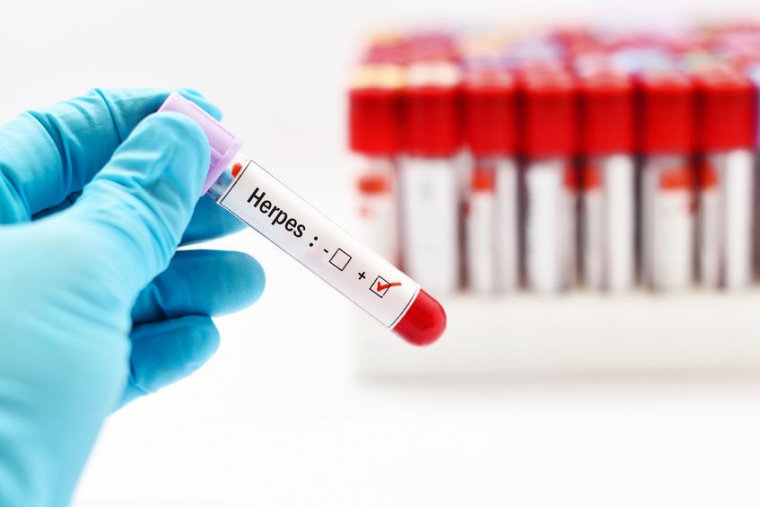
Diagnosing Herpes in Philadelphia
Once at your physician’s office in Philadelphia, your doctor will help confirm the diagnosis of herpes using one or more of the following diagnostic procedures: a physical examination, a swab test, or a blood test. There are significant differences among the tests, so talk to your doctor about what’s best for you. Some are indicated only at the onset of an outbreak, others can determine what type of HSV you have, while others still can determine if you have antibodies to herpes in your blood.
Physical Examination: If you have visible symptoms of herpes, a physical examination may help a doctor determine if you do, in fact, have genital herpes. A physical exam, however, is not conclusive. For example, a physical examination cannot tell you if: the visible symptoms are definitely caused by Herpes (versus another condition); what type of Herpes Virus you have (HSV-1 or HSV-2); or whether your outbreak results from a new infection or one that has been dormant in your body for some time but has just recently surfaced. Remember, most people with genital herpes never have any noticeable symptoms.
Swab Tests: Swab tests are indicated only at the onset of an outbreak. There are four types of swab tests available (as of October, 2006): Tzanck Preparation, Pap Smear, Viral Culture, and PCR (Polymerase Chain Reaction). I have listed them in order of reliability, from least to most.
Tzanck Preparation: For this test, a synthetic swab with a plastic shaft (not a cotton swab with a wood shaft) is rubbed across the abnormal skin, the gathered cells are put on a slide, stained, and examined under a microscope. If Herpes cells are present, the cells appear larger and a different color than uninfected cells. This is a fast test offering immediate results, however, the tradeoff for speed is accuracy. Of the swab tests, this is the least reliable. Still, if it is positive, you likely do have herpes. If it is negative, I recommend a follow-up blood test since a negative test indicates only that the herpes virus was not present at the time the sample was gathered, or that not enough of the herpes virus was present to get an accurate result -- not that you don’t have herpes.
Pap Smear: Pap Smears are similar to Tzanck preparations but use a different staining technique. If the test comes back positive, you likely do have herpes. If it is negative, I recommend a follow-up blood test since a negative test indicates only that the herpes was not present at the time the sample was gathered, or that not enough of the herpes virus was present to get an accurate result -- not that you don’t have herpes
Viral Culture: For this test, a synthetic swab with a plastic shaft (not a cotton swab with a wood shaft) is rubbed across the abnormal skin, the gathered cells are put into a liquid, and the specimen is sent to a laboratory where the suspected herpes cells are mixed with healthy animal cells. The technician then monitors the culture for changes in the healthy cell consistent with the presence of Herpes. If your viral culture comes back positive, you likely have herpes (though you don’t know what type). If your viral culture comes back negative, however, I recommend a follow-up blood test since a negative test indicates only that the herpes virus was not present at the time the sample was gathered, or that not enough of the herpes virus was present to get an accurate result -- not that you don’t have herpes. This test has a high rate of false negatives — 50% or more for recurrent herpes.
Polymerase Chain Reaction (PCR): For this test, a synthetic swab with a plastic shaft (not a cotton swab with a wood shaft) is rubbed across the abnormal skin, the gathered cells are put into a liquid, and the specimen is sent to a laboratory. The gathered material is amplified many times so it can be seen and typed. PCR is four times more sensitive than viral cultures, so if it is available, this swab test is the best option. If your test comes back positive, you likely have herpes and know what type(s) of herpes you have. Again, if your test comes back negative, however, I recommend a follow-up blood test since a negative test indicates only that the herpes virus was not present at the time the sample was gathered, or that not enough of the herpes virus was present to get an accurate result -- not that you don’t have herpes.
Blood Tests: Herpes blood tests can detect the presence of antibodies (the body’s immune response) to the herpes virus, and can also distinguish between HSV-1 and HSV-2 antibodies. If antibodies are present, herpes is present. The ideal time for a blood test is three to four months after suspected exposure, allowing the body time to generate the antibodies it uses to fight the virus. There are five blood tests available: Western Blot, HerpeSelect 1, HerpeSelect 2, Biokit, and CAPTIA.
Herpes Western Blot: This highly accurate test can determine if herpes antibodies are present, as well as which type(s) is present. It is done only at the University of Washington, but samples can be sent there from anywhere in the United States.
HerpeSelect HSV-1 (ELISA or Immunoblot): This test looks for antibodies to HSV-1.
HerpeSelect HSV-2 (ELISA or Immunoblot): This test looks for antibodies to HSV-2.
Biokit HSV-2 Rapid Test/Sure-Vue HSV-2 Rapid Test: This test, branded under both names by different suppliers, can detect antibodies for HSV-2 only.
CAPTIA HSV IgG Type Specific ELISA: This test can determine if herpes antibodies are present, as well as which type(s) is present.
